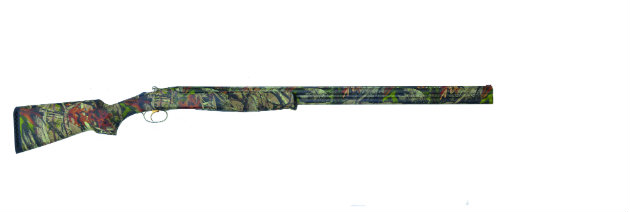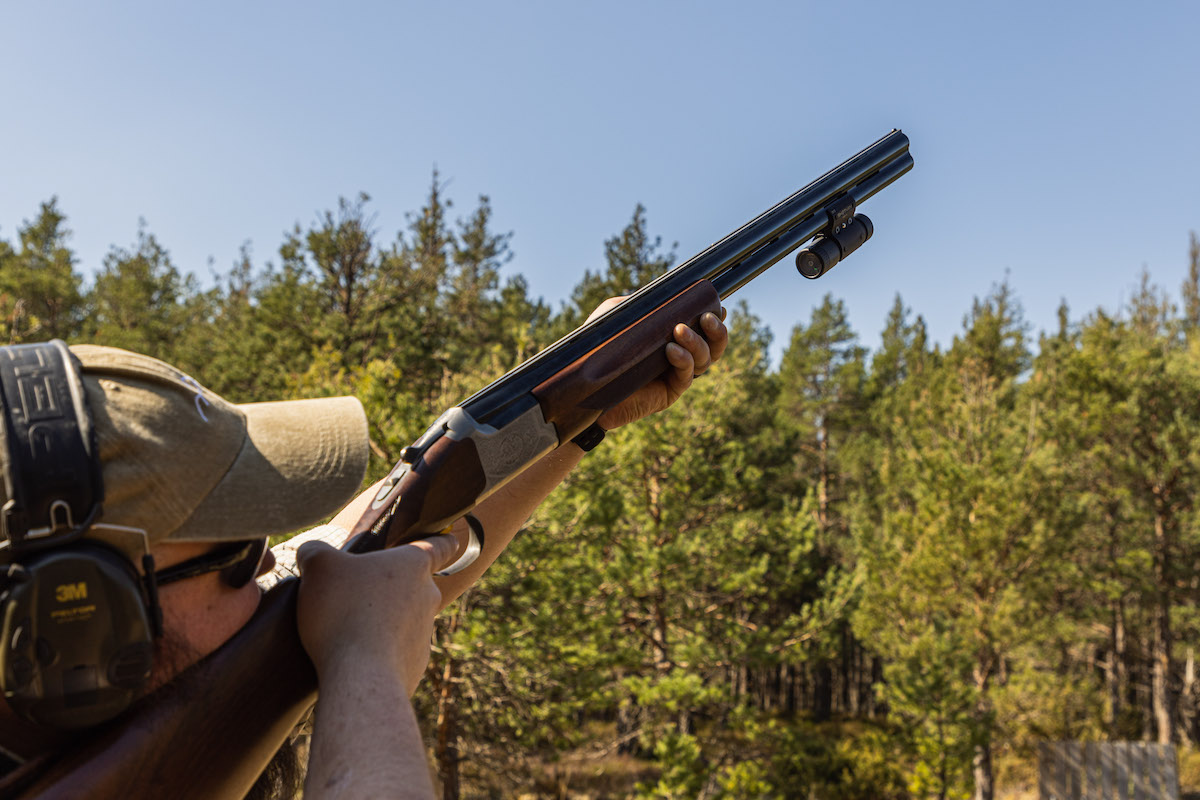Lincoln Premier Wildfowler
Lewis Potter tests a camouflaged wildfowling over-and-under and finds that it has potential to be much more besides

Lincoln Premier Wildfowler
Overall Rating: 85%
Manufacturer: Lincoln
Pros: Nearly full camouflage coverage giving good protection as well as a nice feel
Price as reviewed: £1,200
Cons: A blacked trigger, rather than the popular gold finish, would have been a neat touch
Prior to the ban on lead ammunition over wetlands at the end of 1999, most of my “serious” wildfowling was carried out with my “big gun”, a 6-bore muzzle-loader — though later I acquired an 8-bore breechloader. Shooting around inland ponds and lakes was taken care of with a heavy old double 12 of nondescript make using cartridges such as Eley Maximum. The idea of a bespoke, long-chambered 12-bore never even occurred to me, and camouflage was limited to a few coats of paint or some hessian sacking taped around the barrels.
Gradually and without a great deal of fanfare, the camouflage shotgun appeared on the market, and chamber lengths grew up to 89mm (3½in) in shotguns purpose-made to handle steel shot. With the wildfowling season upon us, I felt it was time to test one of these long-chambered, purpose-made camouflage wildfowling guns and, as I prefer a double, the Lincoln Wildfowler seemed to fit the bill.
A gun of substance
The camouflage is deceptive; it makes the Lincoln Wildfowler look a little bulkier than it actually is. Having said that, it is a shotgun of some substance, weighing in at more than 7½lb — closer to 7¾lb when loaded with some of the bigger cartridges. The long barrels, at 32in, also add to the impression of size and, when fitted with the two extended choke-tubes provided, in addition to the five standard-length chokes, they reach 35in. The extended chokes with this gun were half and full, but the supplier assures me it is possible to order, say, two half-chokes suitable for steel shot.
With the weight and long barrels, the point of balance is slightly more than 1in in front of the barrel hinge point — closer to 1½in with the extended choke-tubes, which gives it a somewhat barrel-heavy feel — but not unbalanced. This is useful as an aid to swinging well with a wildfowling gun. Compared with my 42in heavy-barrelled 8-bore, the handling of the Lincoln Wildfowler is quite fast and far from ponderous.
Nearly 100 per cent camouflage
The camouflage is almost complete in its coverage, with the exception of the fore-end catch, safety, trigger, extended choke-tubes and soft ventilated butt-pad. The pattern is trees and leaves rather than reeds and rushes, but is a good compromise in tone for most purposes. While only a small point, a blacked trigger, rather than the popular gold finish, would have been a neat touch.
It never ceases to amaze me how well this kind of camouflage covering adheres to all sorts of changes of section, such as the fancy pierced top-lever and in between the ventilated top rib. It also provides a slightly “rubbery” feel, almost warm to the touch, which would be most useful on a cold day out on the saltmarsh. The trigger-guard has ample room for a gloved finger.
Underneath the camouflage, the stock and fore-end are traditional wood, both of a good “hand-filling” size, the stock giving a length of pull of a little more than 14½in. When well wrapped up, as is usual when fowling, this will seem longer and will act as a good balance for those long barrels.
Conventional build
Beneath the eye-catching finish (something of a contradiction — it is, after all, camouflage — but laid on the workbench out of its environment it is as noticeable as a zebra in a bare paddock) lurks a strong shotgun of conventional build. What does come as a bit of a surprise on opening the gun is to see neat jewelling on the side of the monobloc, perhaps more in keeping with a game gun for a bit of serious posing rather than a rough, tough wildfowler’s tool-to-do-a-job.
That aside, the chromed bores are just what you’d expect and the lock work is that standard and reliable Italian speciality, the modified trigger-plate layout, powered by helical springs. Two plus points are the auto-safe and a mechanical changeover for the second trigger-pull, so if the inertia block does not quite do its job, you still get that second shot. Realistically, with some of the recoil generated by the bigger cartridges that this Lincoln will chamber, correct functioning of the lockwork is fairly much assured, even with cold, sticky lubricant.
Another good point is blacked lock work, which gives some protection because a damp, salt-rich wind has a habit of causing corrosion almost anywhere, even the parts out of sight.
Lincoln Wildfowler on test
I approached the testing with some trepidation because I am more recoil-shy than I used to be, but I need not have been concerned. The combination of reasonable weight and good stock shape and dimensions mean that the Lincoln Wildfowler was remarkably comfortable to use. With some cartridges, such as the Hull Solway Magnum, it was easy on the shoulder, likewise with lead shot cartridges such as Eley AlphaMax and Lyalvale Express Super Game. It also occurred to me that, in spite of the Lincoln’s appearance, it had potential as a claybuster. Using Eley First and Lyalvale Express Super Competition left the impression one could compete all morning with no discomfort.
Back with dedicated wildfowl cartridges, when using the Remington Sportsman 3½in cartridge, the stock did slap my cheek enough to be noticeable, but not painful. This waspartly due to the fixed stance when shooting at a pattern plate and the rubber butt-pad tending to bounce a bit on the shoulder. The Winchester Blind Side — with the same weight of shot, though less range due to the ballistic drag incurred by the cubic shot — felt lighter in recoil and not that unpleasant to use.
As for general functioning, trigger-pulls proved to be suitably crisp and set about right for a shotgun that could, at times, be used with cold or gloved hands. Ejection of spent cartridge cases was a little softer with the 3½in, which can drag a bit, but it was still more than adequate, even, I would suggest, in adverse conditions. Unusually for a modern over-and-under, it shot to point of aim with all the steel shot loads used.
Verdict
Fits the bill for a dedicated wildfowling gun with potential for other uses








